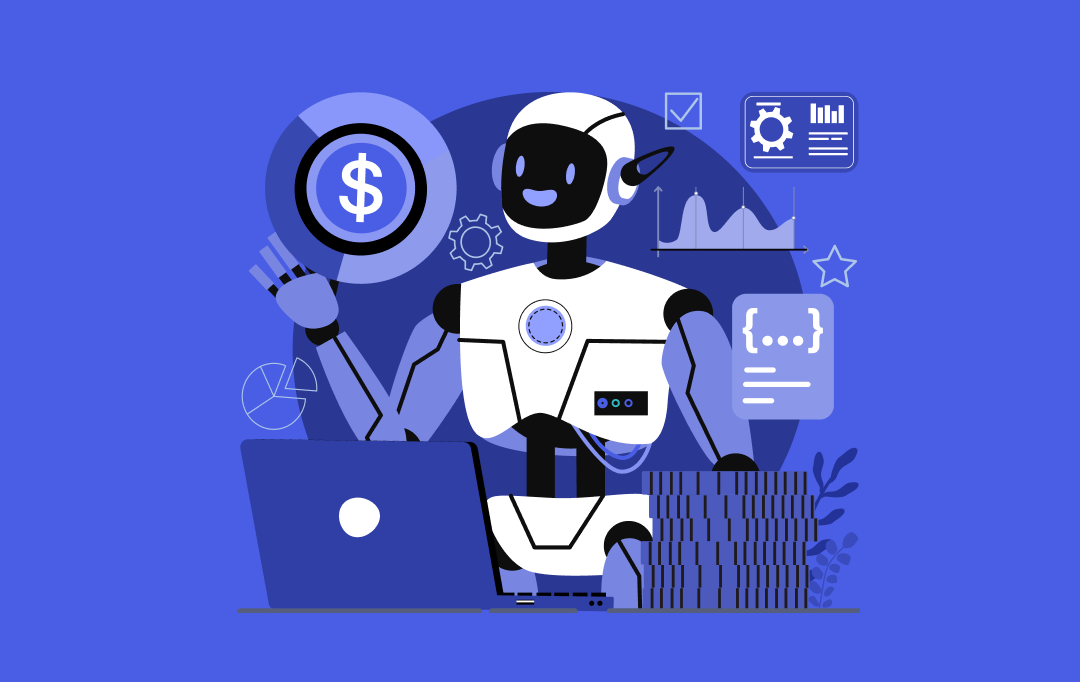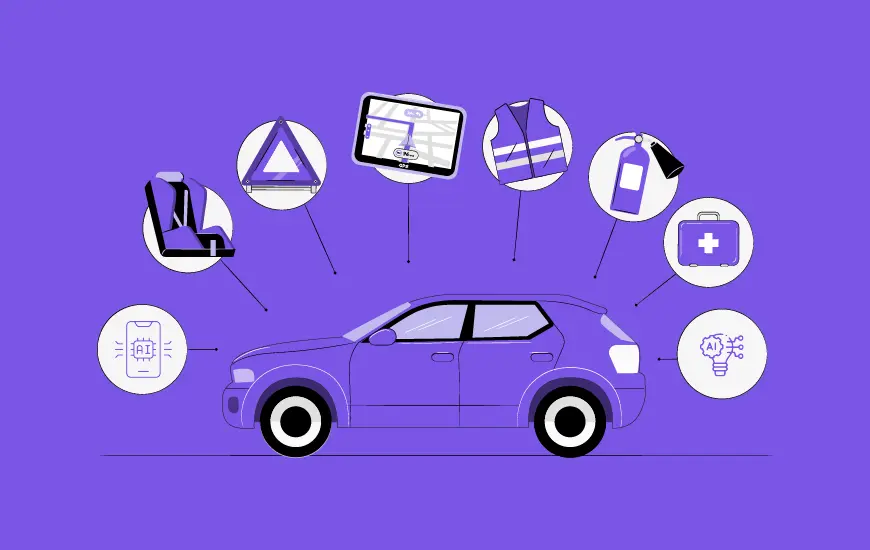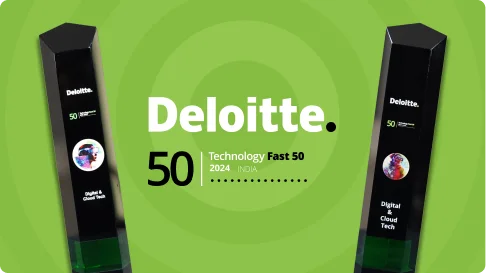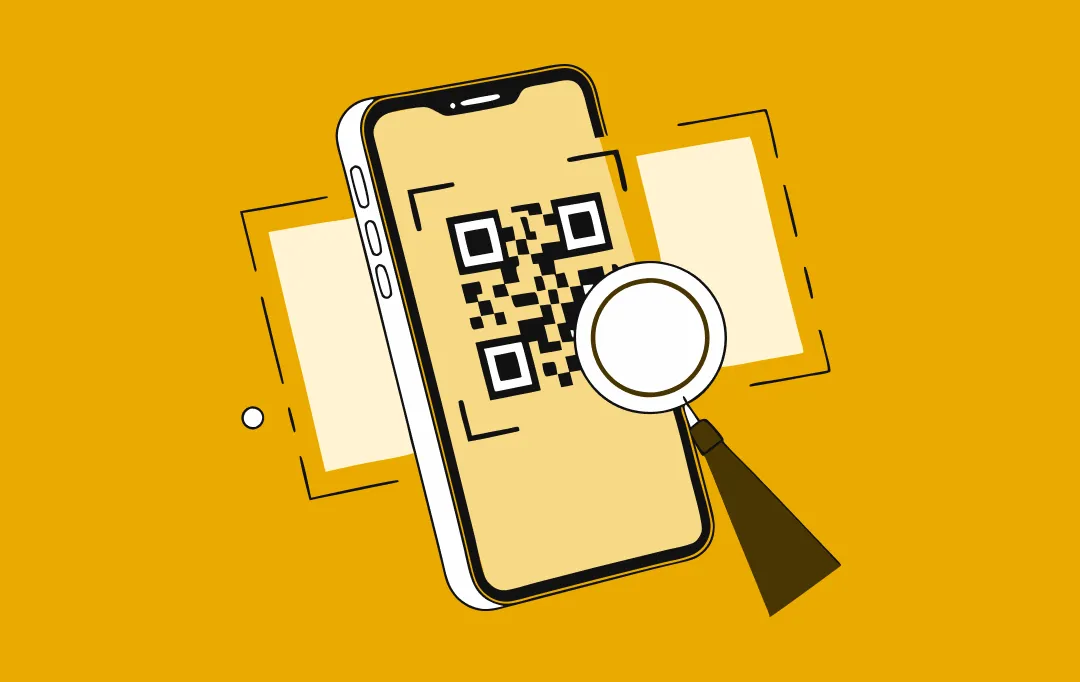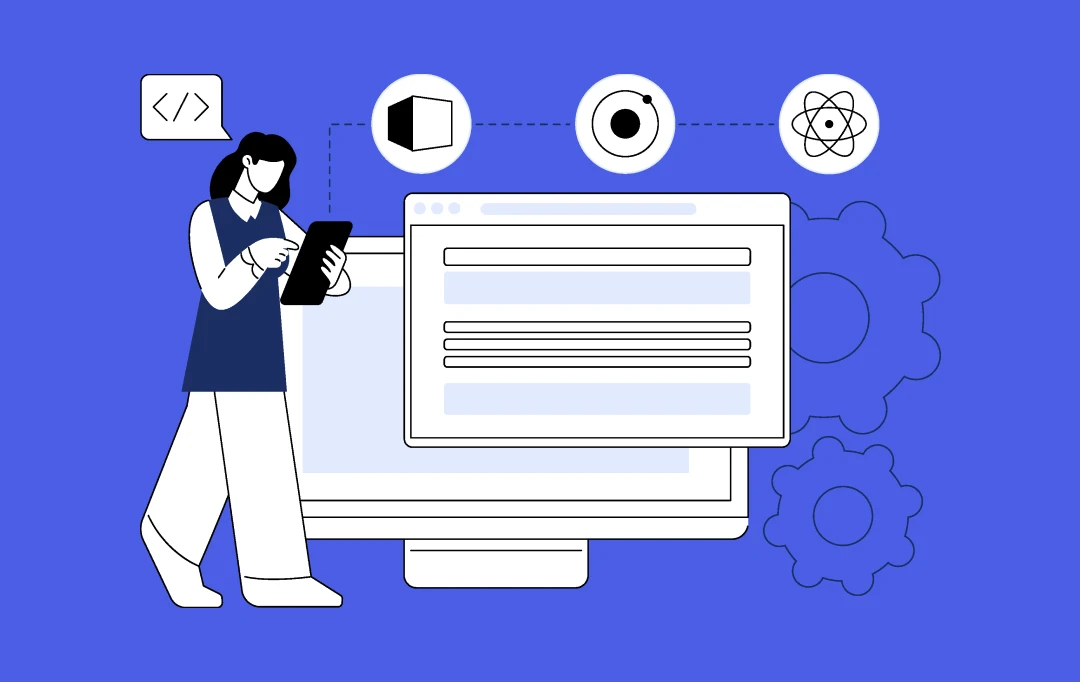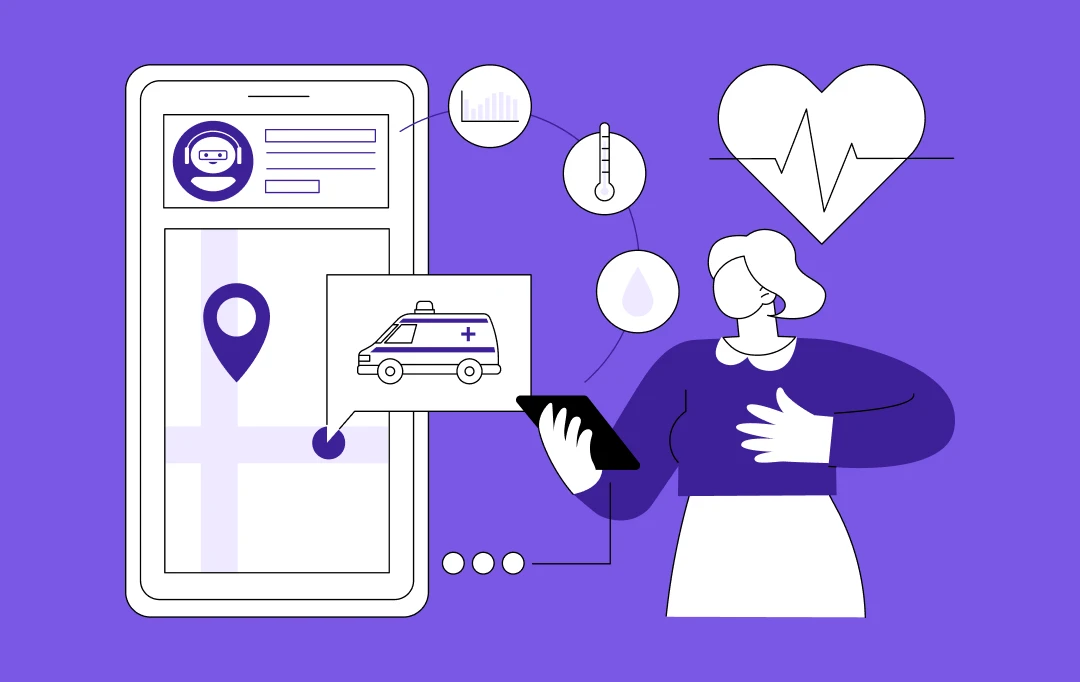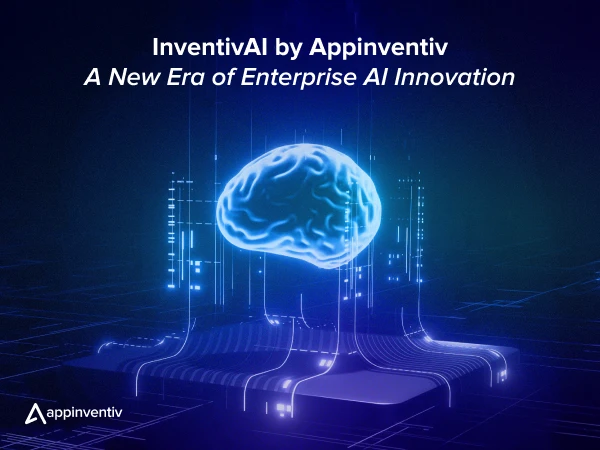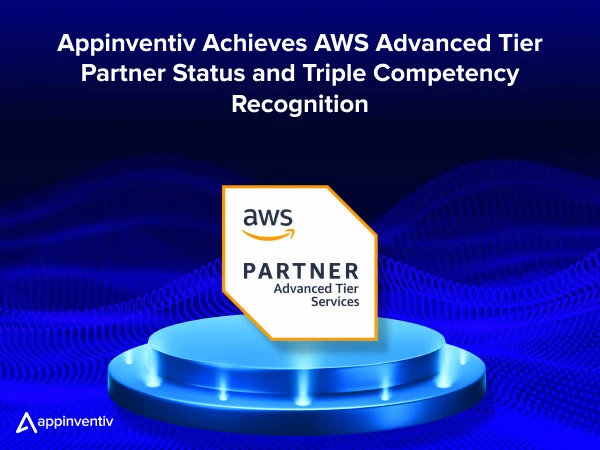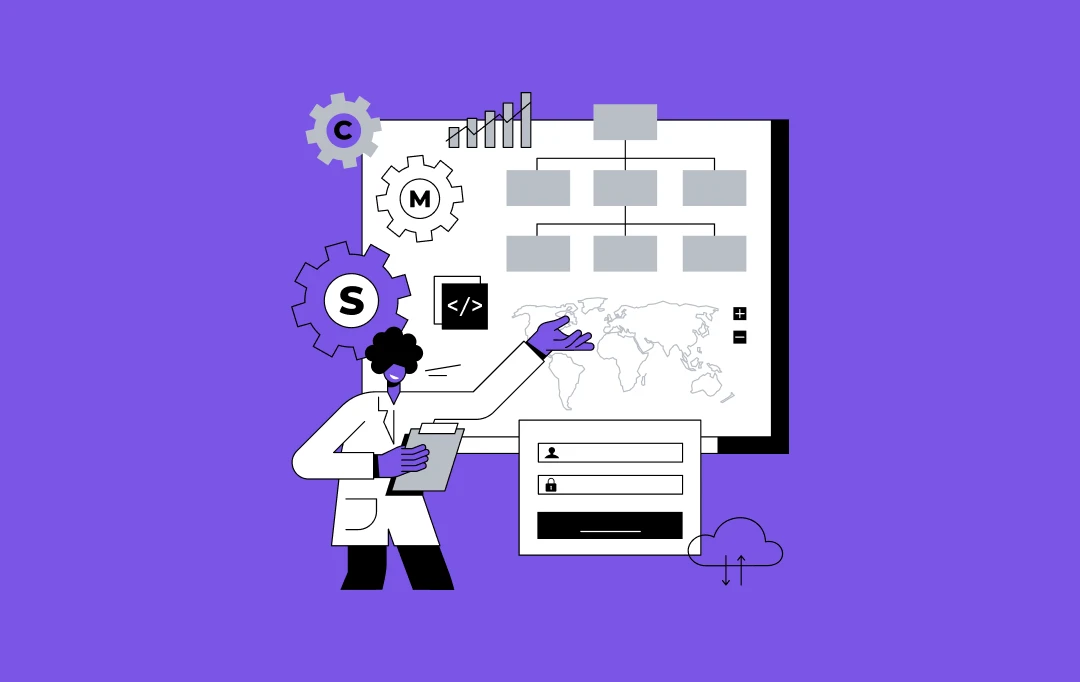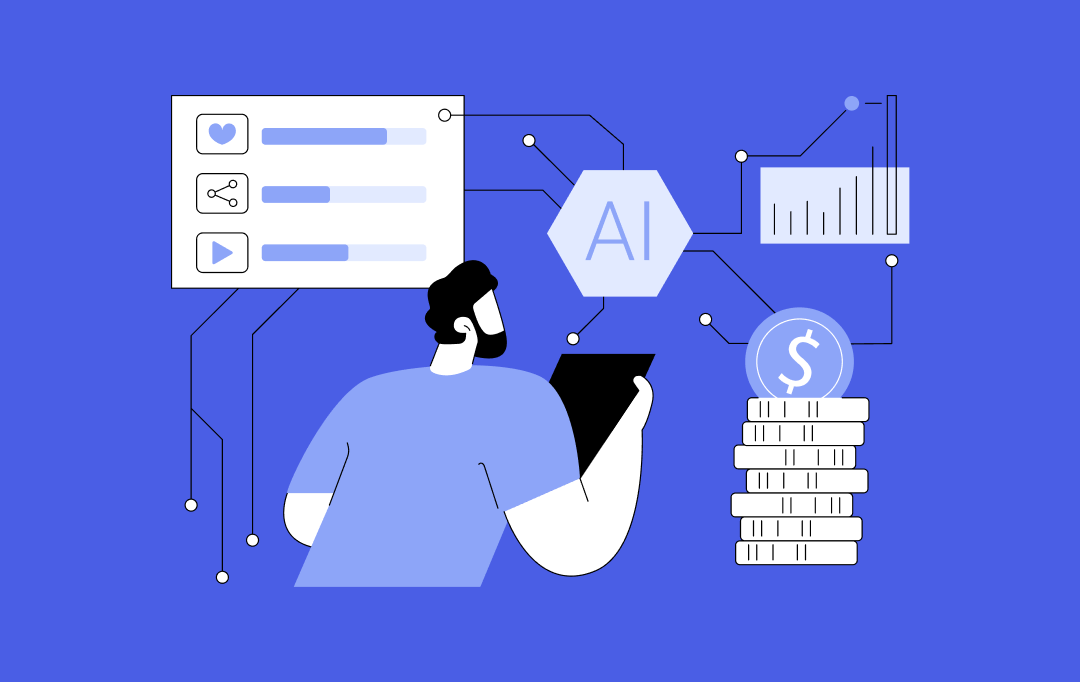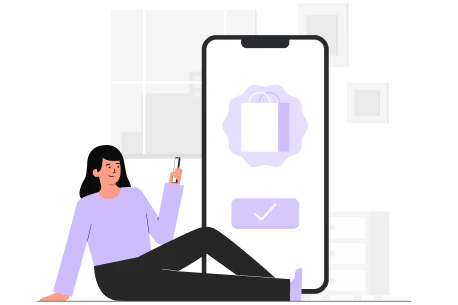- How Does the Quick Commerce Business Model Work?
- What Makes a Quick Commerce App Stand Out? Core Features & Functionalities
- For Merchants and Admins: Control and Insight
- For Delivery Partners: Efficiency and Transparency
- A Roadmap to Build Your Quick Commerce App: The Development Process Explained
- 1. Discovery & Planning
- 2. Design & Prototyping
- 3. Development & API Integration
- 4. Quality Assurance
- 5. Deployment & Post-Launch
- 6. Maintenance & Support
- How Much Does Quick Commerce App Development Cost?
- Develop a Quick Commerce App to Generate High Revenue
- Overcoming Challenges in Quick Commerce App Development
- Navigating Delivery Logistics in Sprawling Metro Areas
- Real-Time Inventory Management with Multiple Vendors
- Ensuring App Performance During Peak Times
- Neglecting Real-World Scenarios
- The Rise of Quick Commerce: Why Speed and Convenience Are King
- Future Trends in Quick Commerce Apps
- Hyper-Personalization with Advanced AI/ML
- Sustainable Delivery
- Drone & Autonomous Vehicle Delivery
- Voice Commerce & AR/VR Integration
- Expansion to Niche Markets
- Blockchain and Cryptocurrency Integration
- Build vs. Buy vs. Hybrid: Choosing the Right Quick Commerce App Strategy
- Why Partner with Appinventiv for Your Quick Commerce App Development?
- FAQs
Key Takeaways
- Quick commerce is a rapidly growing market driven by consumer demand for ultra-fast delivery and seamless convenience, projected to reach 900 million users by 2029.
- Quick commerce app development costs vary widely based on features and scale, ranging from $40,000 for an MVP to $400,000+ for a fully featured app.
- Core features, such as real-time GPS tracking, AI-powered personalized catalogs, and seamless payment options, are essential for delivering a competitive quick commerce app.
- Future trends, including hyper-personalization, sustainable delivery, drone delivery, and voice commerce, will redefine the quick commerce experience.
Have you ever been burning the midnight oil on an important project when suddenly your coffee runs out? Or maybe you’re craving a snack late at night, only to find every nearby store closed. In moments like these, the frustration is real.
But imagine this instead: you pull out your phone, tap a few buttons on a quick commerce app, and within minutes, a fresh cup of coffee or your favorite snack arrives at your doorstep, faster than you could have driven to the nearest store. No fuss, no waiting!
This lightning-fast speed of product delivery and unimaginable convenience is the reason that in 2024, approximately 600 million people engaged with quick commerce; a figure expected to rise sharply to around 900 million users by 2029 (Source: Statista).
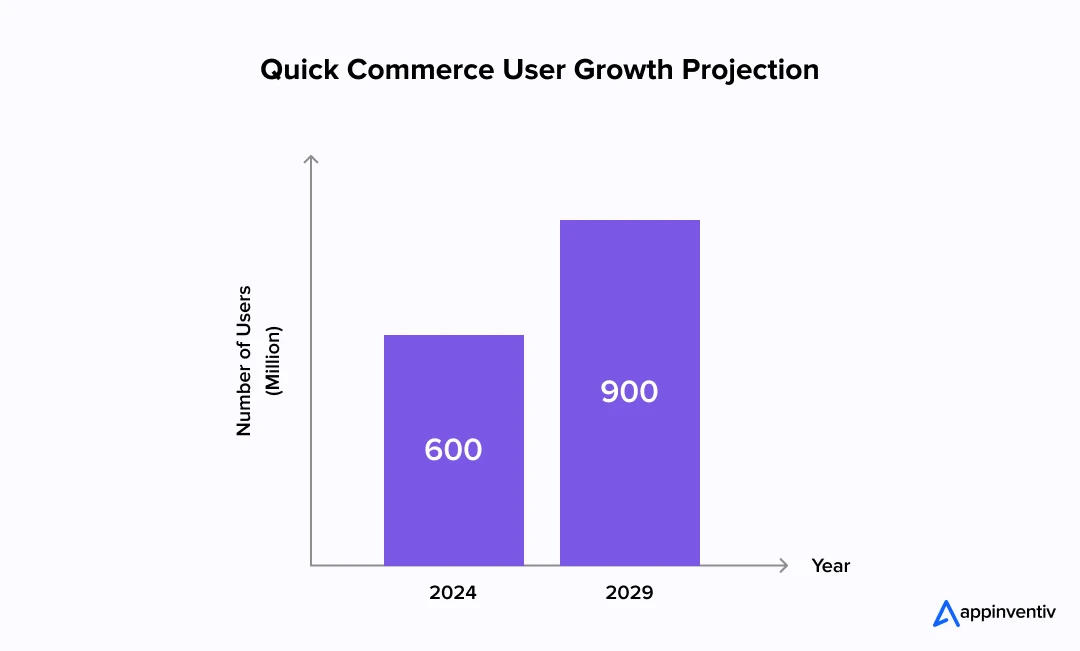
This is the power of quick commerce app development in action, transforming how we think about convenience and instant gratification. By leveraging ultra-fast delivery and hyperlocal inventory, brands tap into new revenue streams, increase customer loyalty, and gain a competitive edge in an increasingly crowded retail landscape.
The quick commerce market has reached a tipping point, with revenue projected to increase from $195 billion in 2025 to $283 billion by 2030, growing at a compound annual growth rate (CAGR) of 7.74% between 2025 and 2030 (Source: Statista).
This market growth is fueled by rising smartphone adoption, dense urban populations, shifts in consumer behavior, and technological advancements, creating a perfect storm of opportunity for forward-thinking entrepreneurs.
Unsurprisingly, for eCommerce entrepreneurs, developing a quick commerce app is no longer a futuristic idea; it’s a strategic move that directly hits customers’ pain points, enhances satisfaction, and drives unimaginable ROI. Let’s dig further to uncover the ins and outs of quick commerce mobile application development, including features, process, costs, future trends, and more.
Discuss your project idea with us and discover foolproof strategies to build a market-winning quick commerce app.
How Does the Quick Commerce Business Model Work?
With the impressive figures driving the quick commerce surge, it’s worth examining the engine behind this speed and convenience. Let’s delve into how exactly the business model for a quick commerce app functions at its core.
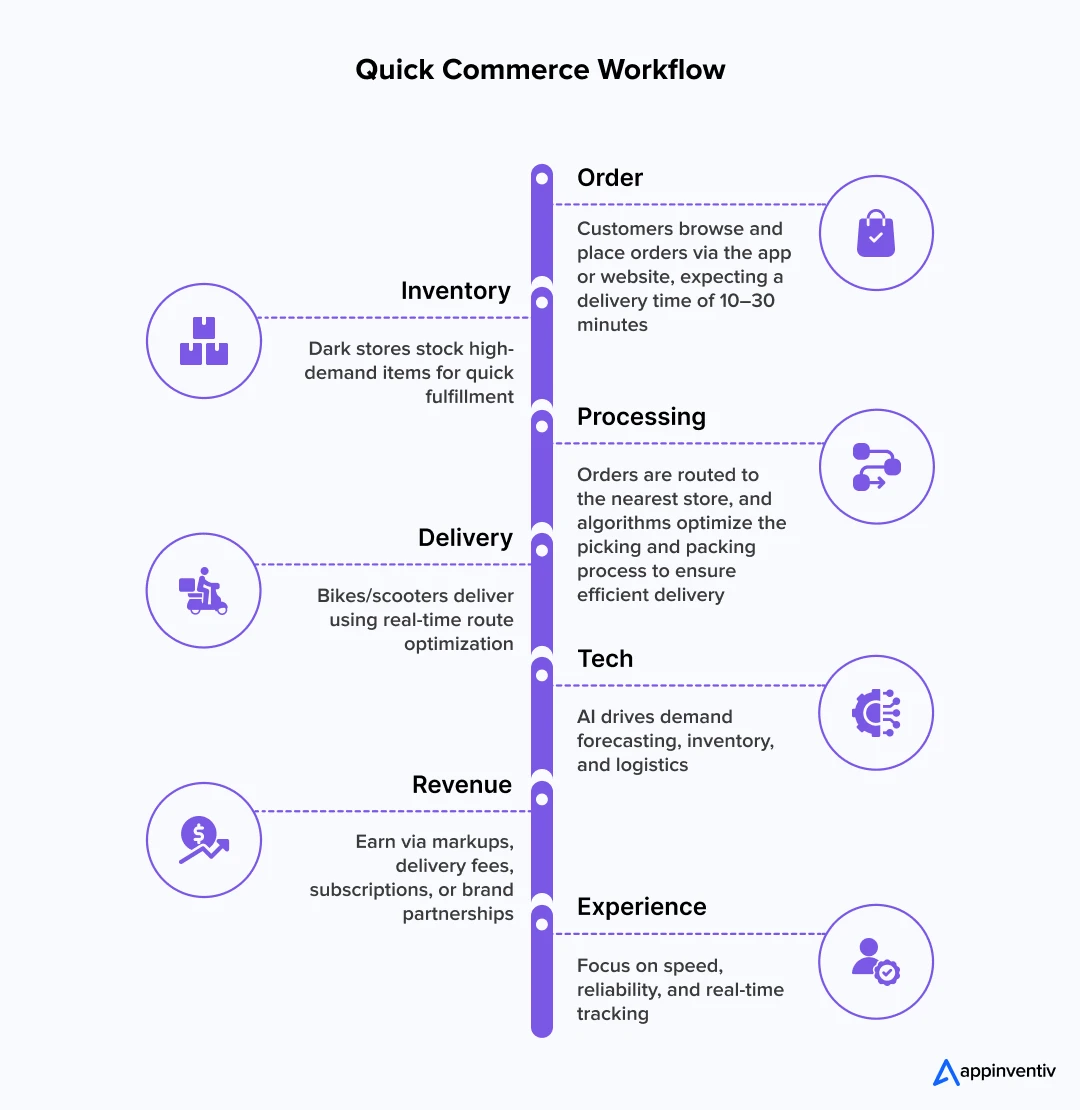 Quick commerce apps operate on a hyperlocal fulfillment model, leveraging a network of strategically located “dark stores” or micro-warehouses stocked with high-demand items close to major urban centers. This setup enables ultra-fast delivery, often within 10–30 minutes, by minimizing the distance between inventory and the end customer.
Quick commerce apps operate on a hyperlocal fulfillment model, leveraging a network of strategically located “dark stores” or micro-warehouses stocked with high-demand items close to major urban centers. This setup enables ultra-fast delivery, often within 10–30 minutes, by minimizing the distance between inventory and the end customer.
A flexible delivery fleet—often composed of gig workers—dispatches orders as soon as they’re placed, ensuring speed and agility.
Revenue streams typically include merchant commissions, delivery fees, advertising or sponsored product placements, and platform charges for vendors or dark store operators. This multi-pronged approach supports both scalability and profitability, distinguishing quick commerce from traditional e-commerce models.
Unsurprisingly, these quick commerce app development trends represent a compelling business opportunity. So why wait? Build an eCommerce app that captures consumers’ need for speed, hyperlocal availability, and seamless convenience—and win loyalty in an ultra-competitive landscape. But first, let’s explore some compelling features that make your Qcommerce app stand out.
What Makes a Quick Commerce App Stand Out? Core Features & Functionalities
Building a successful quick commerce app requires a sophisticated multi-platform ecosystem designed to serve three distinct user groups: end consumers, merchant partners, and delivery personnel. Each component must work seamlessly together to deliver the 10-30 minute experience that defines the category. Keeping that in mind, here are the core features to include in a Q-commerce app development project:
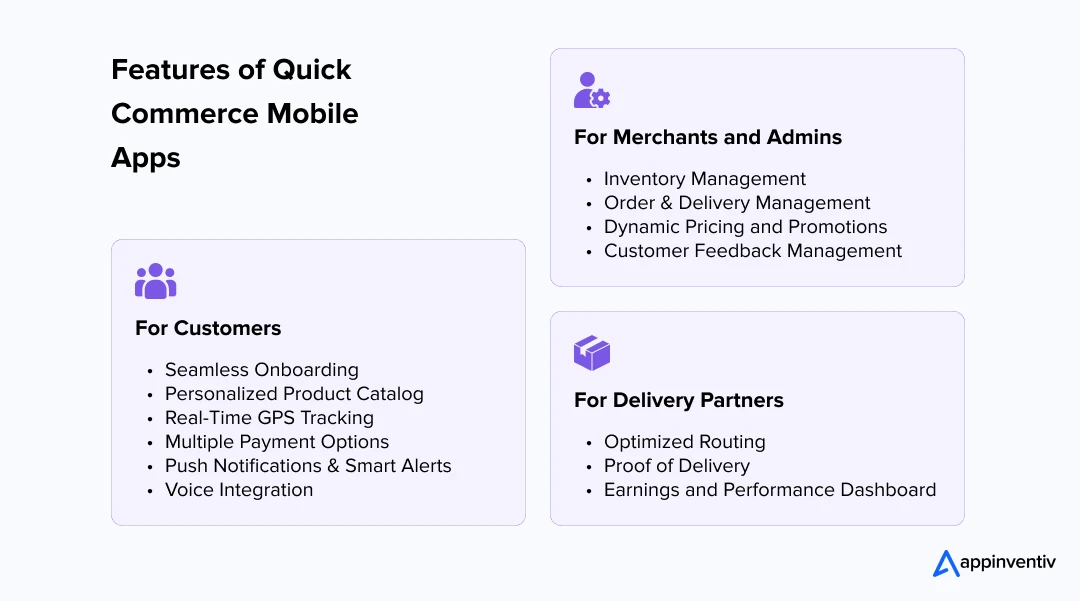 For Customers: Speed, Simplicity, and Personalization
For Customers: Speed, Simplicity, and Personalization
Crafting an intuitive and responsive customer experience is central to develop a quick commerce app. The following features are crucial for attracting and retaining users in the competitive Q-Commerce App development landscape, ensuring your Q app meets high consumer expectations.
Seamless Onboarding
Quick registration options (email, social, passwordless) minimize friction, ensuring users can start exploring your quick commerce mobile app development without delay. This is fundamental for initial user engagement.
Personalized Product Catalog
AI-driven recommendations, based on user behavior and location, optimize the shopping experience. This feature directly increases average order value and customer satisfaction for your quick commerce application development.
Real-Time GPS Tracking
Live updates on order location and estimated time of arrival provide transparency and build trust. This is a non-negotiable feature for any quick commerce app development aiming for immediate gratification.
Multiple Payment Options
Support for diverse payment methods, including digital wallets (Apple Pay, Google Pay), PayPal, cards, and buy now, pay later (BNPL) services, ensures a smooth checkout experience. This flexibility is key for conversion in mobile app development for quick ecommerce.
Push Notifications & Smart Alerts
Timely updates on order status and personalized promotions keep users informed and engaged. These instant alerts are crucial for maintaining communication throughout the rapid development of the quick commerce application.
Voice Integration
Enabling voice commands through assistants like Alexa and Siri offers a unique hands-free shopping experience. This innovative feature can differentiate your Q-Commerce App development.
Also Read: AI Personal Assistant App Development Cost
For Merchants and Admins: Control and Insight
An efficient backend is critical for scaling any express delivery app development project. These administrative features provide the necessary control and insights to manage operations seamlessly, driving the success of your hyperlocal delivery application development.
Inventory Management
Businesses require inventory management software to ensure real-time synchronization of stock levels across dark stores, thereby preventing cancellations and stockouts. This is a core component for the operational efficiency of your Q-Commerce app development.
Order & Delivery Management
Monitoring order status and delivery service-level agreements (SLAs) ensures operational excellence and rapid fulfillment. This oversight is vital for maintaining the speed promise of quick e-commerce application development.
Dynamic Pricing and Promotions
Flexible tools allow instant price adjustments and targeted deals for revenue optimization. This agility supports competitive strategies in quick commerce mobile app development.
Customer Feedback Management
Efficient resolution of complaints through integrated tools helps maintain high satisfaction. This feature is crucial for reputation management in mobile app development for quick ecommerce.
For Delivery Partners: Efficiency and Transparency
The efficiency of your delivery fleet is paramount for quick commerce app development. The delivery partner app provides essential tools to optimize routes and streamline processes, directly supporting rapid and reliable hyperlocal delivery mobile app development.
Optimized Routing
AI-driven route planning reduces delivery times, ensuring the speed critical for Q-Commerce App development. This feature maximizes driver efficiency.
Also Read: Route Planner App Development Costs, Benefits, and Features
Proof of Delivery
Options for photos or digital signatures assure order completion and reduce disputes. This enhances accountability within your quick commerce application development.
Earnings and Performance Dashboard
Transparent tracking motivates delivery partners and promotes accountability. This clear overview supports a high-performing delivery fleet for your quick e-commerce application development.
Also Read: Top 10 eCommerce app features for startups and enterprises
A Roadmap to Build Your Quick Commerce App: The Development Process Explained
Building a successful quick commerce app requires a systematic approach that strikes a balance between speed to market, scalability, and user experience. The quick commerce app development process follows six distinct phases, each critical to ensuring market success. Here’s a step-by-step process to build a quick commerce app:
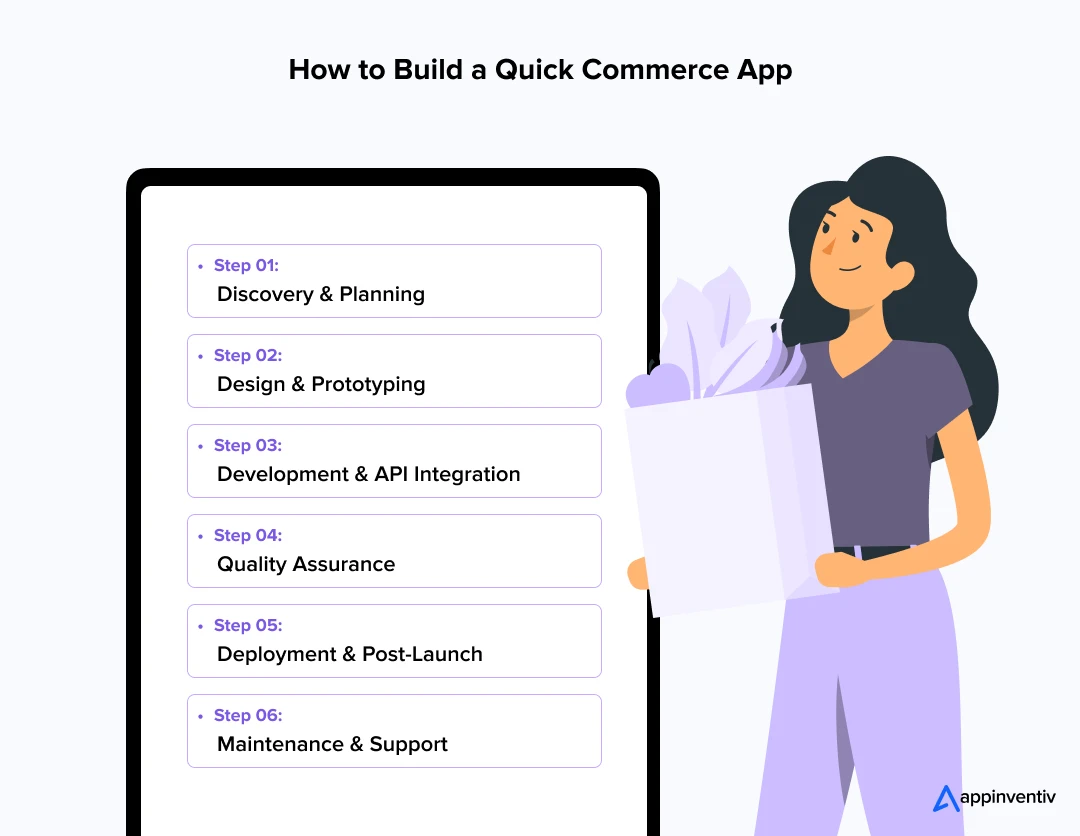
1. Discovery & Planning
Successful apps begin with deep market research that includes analyzing competitors like Instacart and GoPuff, understanding your target users’ pain points, selecting the right tech stack for hyperlocal delivery and Q-Commerce platform development, and defining a unique value proposition. This phase involves meticulous requirement gathering, ensuring that your feature roadmap prioritizes what will drive the highest return on investment (ROI).
2. Design & Prototyping
This phase focuses on the user experience and visual appeal. The focus here is on building a clean, intuitive UI/UX optimized for speed and ease of use. At this stage, designers create wireframes and interactive prototypes that emphasize speed, simplicity, and ease of navigation. Early user testing helps refine the design to ensure it aligns with customer expectations and usability standards.
3. Development & API Integration
In this crucial phase, developers bring the app to life by coding the frontend and backend components. Essential third-party APIs for payments, maps, notifications, and messaging are integrated to enable real-time delivery tracking, secure transactions, and seamless communication between users, merchants, and delivery partners.
4. Quality Assurance
Comprehensive testing ensures your app performs flawlessly across devices, handles real-world delivery conditions, and secures customer data. So, at this stage, quality analysts test your app at various parameters to validate the app’s functionality, performance, and security across different devices and network conditions.
5. Deployment & Post-Launch
Once the app passes all checks, it is submitted to the Google Play Store and Apple App Store for approval. After launch, close monitoring of user feedback and app analytics guides iterative improvements. Agile updates enable quick issue resolution and the introduction of enhancements to enhance user satisfaction.
6. Maintenance & Support
This is an ongoing phase that includes continuous bug fixes, regular updates to ensure compatibility with new OS versions, feature enhancements based on user feedback and market trends, security patches, and diligent performance monitoring. Server maintenance and scaling are also vital for accommodating growth.
Also Read: Understanding App Maintenance Costs in 2025
How Much Does Quick Commerce App Development Cost?
Understanding the total cost to create a quick eCommerce app is crucial for entrepreneurs seeking to enter this competitive market. However, there is no predefined formula to quote the total cost to build a Q-commerce platform.
The cost of developing a quick commerce app varies significantly based on several factors, including feature complexity, technology choices, UI/UX design, platform compatibility, and compliance requirements.
On average, hyperlocal delivery app development costs range from $40,000 to $400,000 or more, depending on several key components.
Additionally, you must set a budget for annual maintenance costs, which typically account for 20–30% of your initial development budget. This budget covers bug fixes, OS updates, new features, server hosting, and third-party service fees.
Here’s a breakdown of hyperlocal delivery e-commerce app development costs based on its complexity and typical development approach:
| Development Stage | Features Included | Estimated Cost | Timeline |
|---|---|---|---|
| MVP Development |
| $40,000 – $80,000 | 4-6 months |
| Mid-Level App |
| $90,000 – $200,000 | 6-10 months |
| Fully Featured App |
| $200,000-$400,000 or more | 10-15 months or more |
Develop a Quick Commerce App to Generate High Revenue
Even if quick commerce app development calls for a significant initial investment, it offers a powerful path to generate high revenue in the booming on-demand delivery market. By creating such an app, businesses can tap into a market of consumers who prioritize speed and convenience in their online shopping experience. Additionally, companies can implement diverse revenue streams to achieve profitability and build a strong market presence.
Some of the most common revenue models for quick commerce applications are:
- Commissions: Charge merchants a percentage of each order.
- Delivery Fees: Implement flat or dynamic fees for deliveries.
- Subscription Plans: Offer premium memberships for benefits like free or discounted deliveries.
- In-App Advertising: Allow merchants to pay for prominent listings or banner ads.
- Surge Pricing: Apply higher delivery fees during peak demand.
- Data Insights: Sell aggregated, anonymized customer data to market research firms (with strict privacy adherence).
- Strategic Partnerships: Collaborate with brands for exclusive promotions or integrate financial services.
Overcoming Challenges in Quick Commerce App Development
While the opportunities in Q-Commerce app development are immense, they also present some operational and regulatory challenges that can significantly impact their long-term success. Understanding these obstacles and implementing proactive mitigation strategies separates successful platforms from failed ventures.
Let’s explore the potential challenges of quick commerce app development and strategies to overcome them.
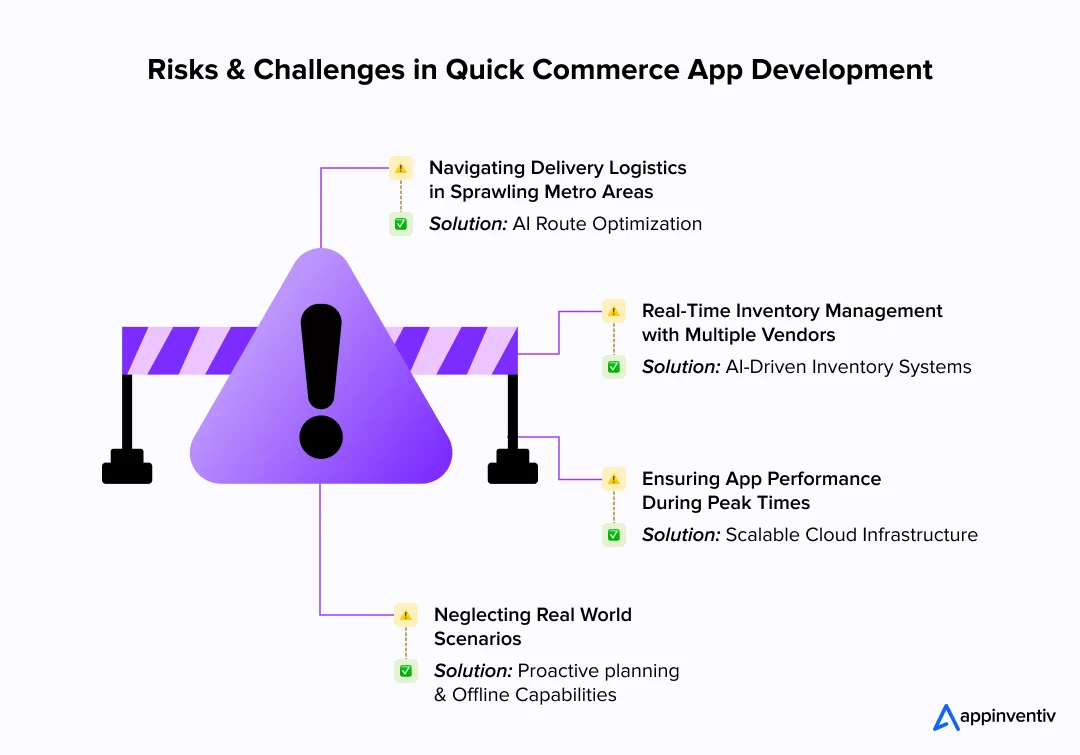
Navigating Delivery Logistics in Sprawling Metro Areas
Challenge: Dense urban settings often result in traffic jams, parking limitations, and complex buildings that slow down deliveries, posing a significant hurdle for the development of quick commerce mobile apps.
Solution: To build a quick commerce app that delivers fast in cities, use AI-powered route optimization that adapts to real-time traffic and weather. Additionally, position dark stores strategically to minimize delivery distances and expedite fulfillment.
Real-Time Inventory Management with Multiple Vendors
Challenge: Managing real-time inventory across numerous vendors and dark stores can quickly become overwhelming. Discrepancies can lead to stockouts or overstocks, harming both customer satisfaction and operational efficiency.
Solution: Integrate AI-driven inventory systems for real-time updates and demand forecasting, which is essential to create a quick ecommerce app that stays reliable and efficient.
Ensuring App Performance During Peak Times
Challenge: During peak periods like meal times or weekends, mobile app development for quick ecommerce must handle massive surges in user activity without faltering. Poor app responsiveness or downtime can quickly erode your customer base.
Solution: Use scalable cloud platforms and microservices architecture, plus load balancing and CDNs, to keep your quick commerce mobile application development responsive even under heavy loads.
Neglecting Real-World Scenarios
Challenge: Overlooking critical real-world conditions, such as poor user connectivity during order placement or insufficient battery optimization for delivery partners, can significantly undermine app reliability and user satisfaction.
Solution: Implement offline capabilities for core functionalities, allowing users to complete actions even with intermittent connectivity. Design the delivery partner app with battery efficiency in mind, incorporating features such as optimized route guidance to minimize unnecessary travel and conserve battery power.
The Rise of Quick Commerce: Why Speed and Convenience Are King
The success stories of platforms like Instacart in the US, Getir in the UK, and Zepto in India demonstrate a seismic shift in consumer expectations. In 2024, Zepto dominated the quick commerce space with 27.7 million downloads worldwide, followed by Getir with 3.9 million downloads and Gopuff and Flink with 1.8 million and 0.63 million downloads, respectively (Source: Statista).
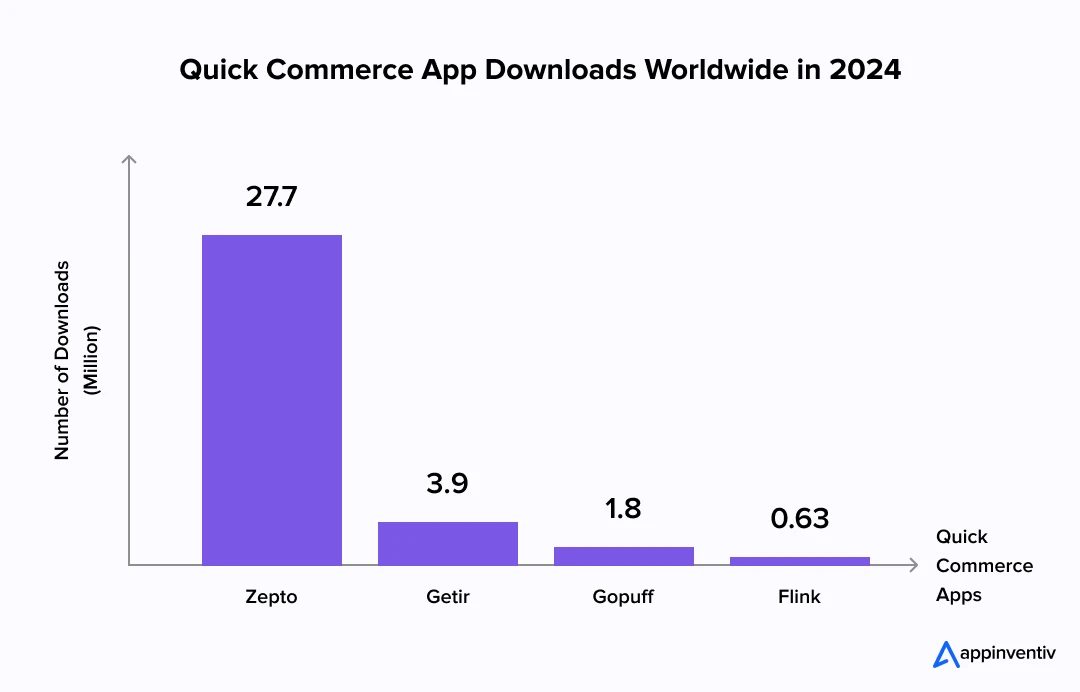
These companies have turned grocery and essentials delivery into an express service, typically delivering within 10-30 minutes. For instance, Blinkit, a leading quick commerce app in India, has expanded its quick delivery offerings into electronics, cosmetics, jewelry, and even premium goods like iPhones, by partnering with Apple Premium Resellers.
What fuels this explosive growth? This marks the new wave of the “e-grocery revolution,” where the convergence of digital adoption, urbanization, and a growing desire for instant gratification is driving the quick commerce market to grow at a CAGR exceeding 7.74% globally.
Future Trends in Quick Commerce Apps
The express delivery app development landscape continues to evolve rapidly, driven by technological advancements, changing consumer expectations, and operational innovations. Keeping an eye on these quick commerce app development trends will enable you to build future-ready platforms that maintain competitive advantages as the market matures.
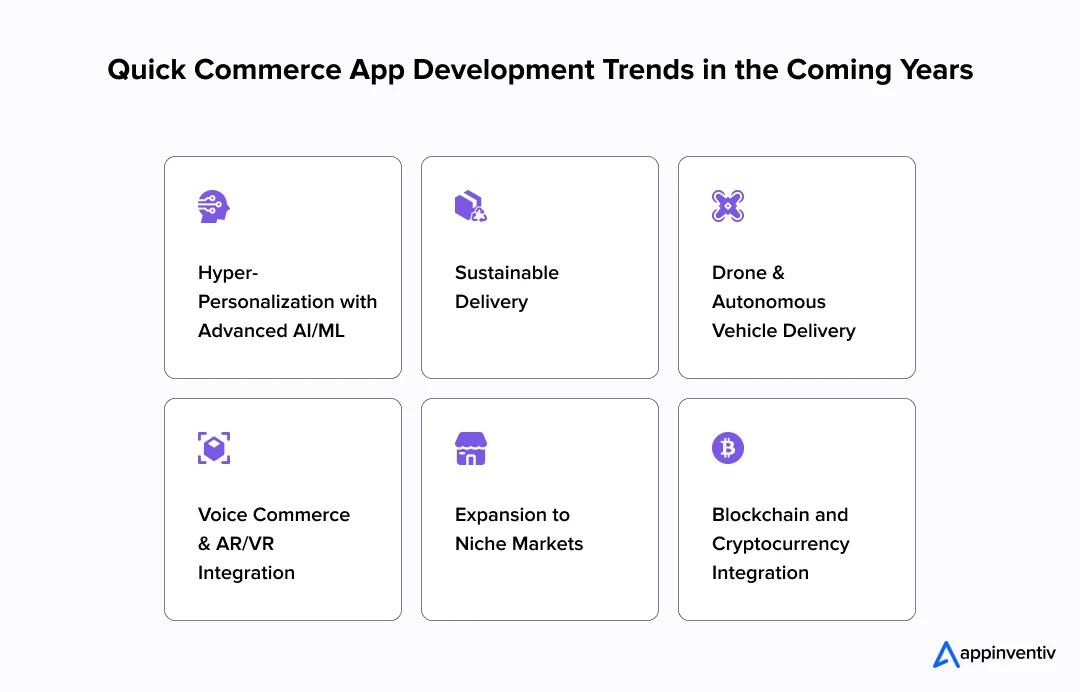
Hyper-Personalization with Advanced AI/ML
Beyond simple recommendations, AI-powered personalization represents the next frontier in optimizing the customer experience. Advanced recommendation engines analyze purchasing patterns, seasonal trends, local events, and even weather data to predict customer needs before they realize them themselves. These systems can automatically suggest relevant products, optimize inventory placement, and predict demand fluctuations with increasing accuracy.
Also Read: 10 Ways How AI in eCommerce Influences Online Stores
Sustainable Delivery
As environmental concerns grow, the industry is seeing a strong push towards green app development and sustainable delivery solutions. This includes adopting electric vehicles (e-bikes, e-vans), implementing optimized routes to minimize emissions, and utilizing eco-friendly packaging across the supply chain.
Drone & Autonomous Vehicle Delivery
While still in nascent stages, drone and autonomous vehicle delivery hold immense potential for further reducing delivery times and costs in specific urban and suburban areas.
Voice Commerce & AR/VR Integration
Voice-activated ordering through smart assistants and augmented reality (AR) for visualizing products in a user’s space could become more common, offering hands-free and immersive shopping experiences.
Also Read: AR in eCommerce: Benefits, use cases, and examples
Expansion to Niche Markets
Quick commerce is expanding beyond groceries to specialized verticals, including pharmaceuticals, pet supplies, and fashion and electronics, signaling a broader application of instant delivery.
Blockchain and Cryptocurrency Integration
The integration of blockchain technology in mobile apps will enable transparent supply chain tracking, providing customers with detailed product provenance information, including origin, manufacturing processes, and handling history.
Also Read: Future of Mobile Commerce: Stats & Trends to Know
Partner with tech experts who understand both tech trends and market dynamics.
Build vs. Buy vs. Hybrid: Choosing the Right Quick Commerce App Strategy
When planning to leverage the benefits of Q-commerce app development, one common question that often confuses the witty minds is – whether to build from scratch, buy an off-the-shelf solution, or combine both approaches. The ideal choice for your quick commerce application development hinges on your unique business goals, timeline constraints, budget, and customization needs.
Making the informed decision here is key to optimizing costs, speeding up your market entry, and achieving a balance between adaptability and dependable performance. Therefore, we’ll now examine the most popular types of quick commerce application development.
| Approach | Pros | Cons | Best For |
|---|---|---|---|
| Build | Fully customizable, scalable, competitive edge | Longer development time, higher upfront cost, full control | Unique business models, complex needs |
| Buy | Faster deployment, lower initial cost | Limited customization, potential integration issues | Standard use cases, quick launches |
| Combine | Balanced customization with faster go-to-market | Requires skilled integration, moderate costs | Businesses needing speed + flexibility |
Why Partner with Appinventiv for Your Quick Commerce App Development?
The quick commerce revolution is not just a passing phase; it is transforming how consumers expect to shop and receive products. However, building a successful quick commerce app requires more than just technical skill; it also necessitates deep market insight, operational expertise, and agility to meet ever-evolving customer demands.
Appinventiv, a premium provider of eCommerce app development services, brings this blend of expertise to the table. Our deep knowledge of quick commerce app development challenges and scalable architecture enables us to craft solutions that not only perform flawlessly but also drive business growth.
Here’s a glimpse into how we’ve helped global leaders transform their digital commerce:
- KFC: For KFC, Appinventiv developed a comprehensive food delivery application that optimized the ordering process and helped the brand achieve a transformative outcome:
- 22% more conversions
- 4.5-star average rating across both app stores
- Over half of all orders now come directly through the app
- 60% jump in the repeat purchases

- Adidas: We transitioned Adidas from a predominantly web-based presence to a mobile-first platform, enhancing user engagement through a streamlined, high-performance app. Our work enabled Adidas to acquire 500,000 new users and over 2 million downloads.
- 6th Street: Appinventiv partnered with 6th Street to transform their online shopping experience, delivering a unified mobile platform that enhanced user engagement and streamlined the retail journey. The results? 3+ million iOS app downloads and 1+ million Android app downloads.
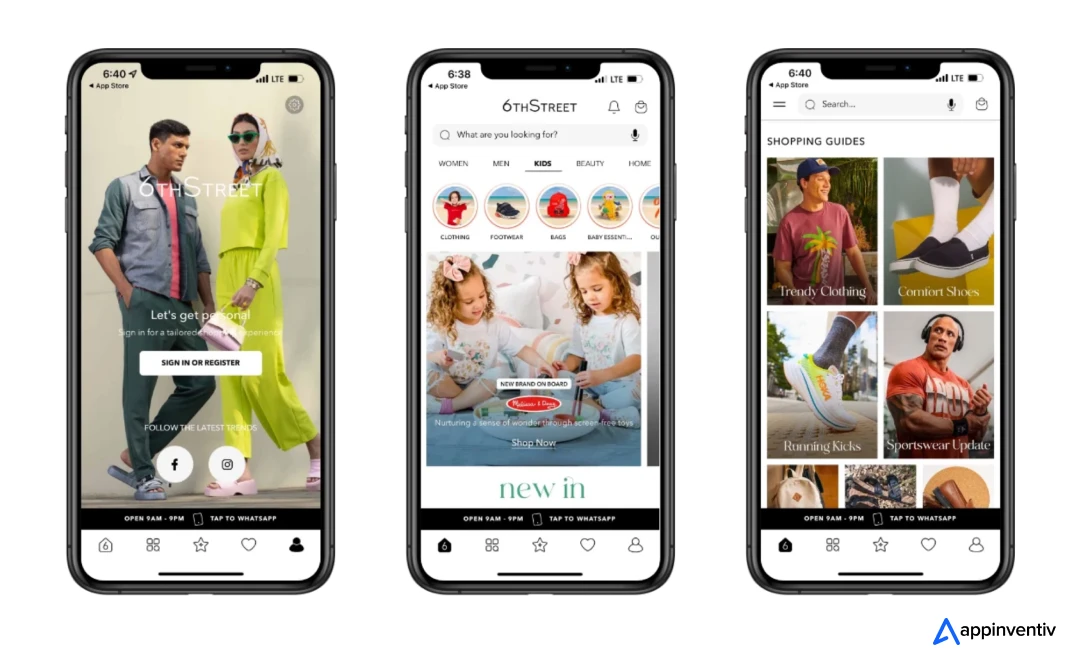
- Edamama: We partnered with Edamama to develop a bespoke eCommerce app, focusing on a personalized shopping experience and efficient order fulfillment for busy mothers and their children.

Whether you aim to create an MVP or a fully featured Q-commerce app, our team of 1600+ tech experts is happy to help you build an app that truly resonates with your customers. By partnering with our seasoned quick commerce mobile app developers, you can bring your vision to life, delivering speed, convenience, and unparalleled customer satisfaction.
The future of eCommerce is fast, and the time to act is now. Partner with us and turn your quick commerce vision into a market-leading reality today.
FAQs
Q. How to build a hyperlocal delivery app?
A. Hyperlocal delivery mobile app development involves several key steps: comprehensive market research, defining your business model (e.g., aggregator, store-owned, or dark store model), designing intuitive user and delivery partner apps, developing a robust backend with real-time tracking and logistics management, rigorous testing, strategic deployment and post launch support.
To gain an in-depth understanding of the quick commerce app development process, please refer to the above blog.
Q. Which APIs should be integrated for real-time delivery updates into a Q-commerce app?
A. Here are the three most common APIs used for real-time delivery updates:
- Mapping & Geolocation APIs: Google Maps API, Mapbox API (for live tracking and location data).
- Push Notification APIs: Firebase Cloud Messaging (FCM), OneSignal (for instant status alerts).
- Delivery Management Platform APIs: ClickPost API, EasyPost API (for advanced logistics and tracking).
Q. What is a quick e-commerce application?
A. Quick commerce (Q-commerce) represents the next evolution in retail delivery, promising ultra-fast delivery of everyday essentials, typically within 10 to 30 minutes. It focuses on immediate needs and convenience, often leveraging a network of dark stores or micro-fulfillment centers to ensure rapid fulfillment and last-mile delivery.
Unlike traditional eCommerce that focuses on a vast product selection with next-day delivery, quick commerce application development prioritizes speed, convenience, and hyperlocal fulfillment through strategically placed micro-warehouses called “dark stores.”
Q. How long does it take to build a quick commerce app?
A. The timeline to develop a quick commerce app varies based on several factors, particularly the project’s complexity. For instance, a basic MVP can take 4-6 months, while a mid-range Instant delivery App development with more features requires 6-10 months. A fully-featured, quick commerce app with real-time delivery tracking, deep integrations, and sophisticated logistics can take 10 – 15+ months.
Q. What regulatory compliance should I be aware of?
A. For mobile app development for quick ecommerce operating in the US and UK, key regulatory compliance areas include:
- Data Protection: GDPR (General Data Protection Regulation) in the UK/EU and CCPA (California Consumer Privacy Act) in the US are crucial for handling customer data.
- Consumer Rights: Adhering to consumer protection laws regarding product descriptions, returns, refunds, and delivery timeframes.
- Labor Laws: Compliance with regulations about gig economy workers, minimum wage, and benefits for delivery partners.
- Taxation: Proper handling of VAT in the UK, sales tax in the US, and income tax for delivery partners.


- In just 2 mins you will get a response
- Your idea is 100% protected by our Non Disclosure Agreement.
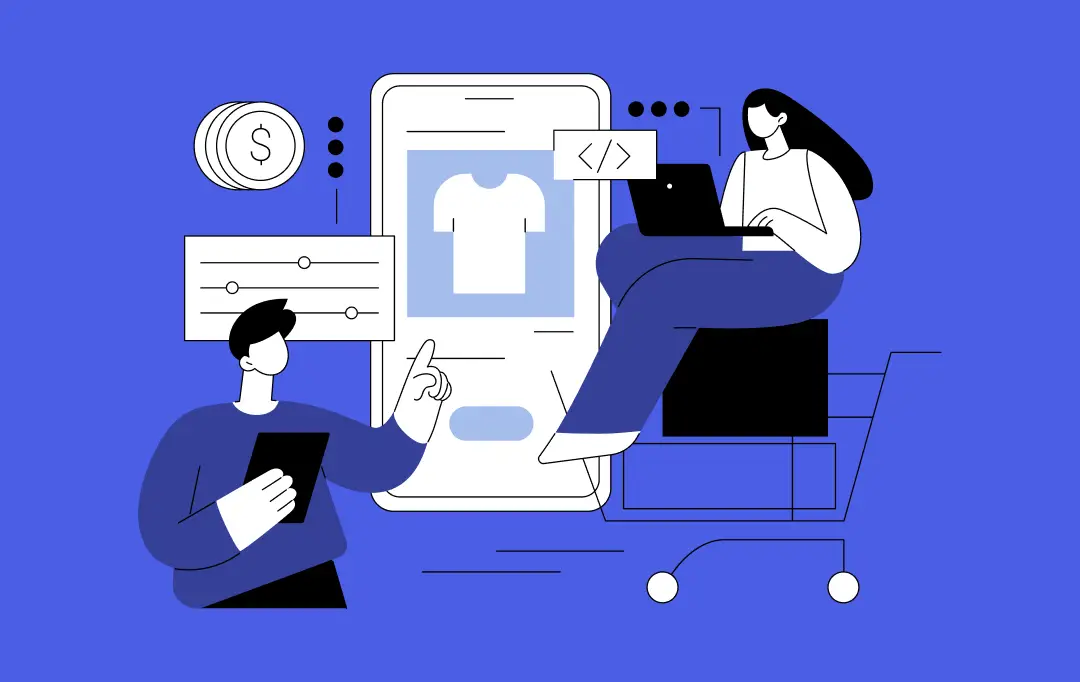
How Much Does It Cost to Develop an eCommerce Platform like The Iconic in Australia?
Key takeaways: Building an eCommerce platform like The Iconic in Australia can cost anywhere from AUD $46,500 to AUD $775,000+ depending on scale and sophistication. The real eCommerce cost drivers are backend architecture, integrations, compliance, and system reliability, not just design screens. Platforms like The Iconic succeed because they combine shopping experience, logistics, and payments…

Key takeaways: Global eCommerce fraud losses are expected to exceed $107 billion by 2029. Digital growth, Buy Now Pay Later features, and rising automation are all opening up new avenues for fraudsters to exploit. First-party abuse and refund abuse have ended up being the greatest source of pain globally, affecting nearly half of all online…

Top 20+ Profitable Ecommerce Business Ideas In Australia in 2026
Key takeaways: Australia’s eCommerce surge isn’t just about numbers, it’s about mindset. Consumers expect personalization, speed, and sustainability as standard, not extras. The best business ideas address a genuine problem. From pet care to sustainable fashion, the niches winning in 2026 will be the ones that understand specific customer pain points. Technology is the quiet…
